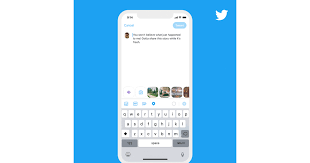Looking to improve your brand’s Twitter presence in 2021?
This week, Twitter has shared some new tips on how to establish a brand voice via tweet, while it’s also provided some new worksheets to better facilitate the process.
First off, on the fundamentals of brand voice – Twitter says that the three essentials of establishing your brand voice on the platform come down to what it calls ‘the three ‘C’s’:
- Concise
- Clear
- Conversational
Twitter, by nature, is about brevity, so you need to be concise in your messaging, while you also need to clearly state your intention, which is generally the biggest challenge in such a confined space. You should also seek to inspire conversation in order to get your community involved – what will get your followers thinking and talking, and how you can facilitate discussion around your brand values and goals?
These aren’t necessarily simple to address but to provide further guidance, Twitter has also provided a new set of worksheets to help further zone in on some of the key elements.
The first worksheet looks at establishing the parameters of what your brand will tweet about by setting ‘guardrails’ for your tweets.
As explained by Twitter:
“Looking at your wider brand guidelines, industry, and company values, come up with a list of topics, themes, words – even emojis – to avoid. Clear limits help to outline a safe space for creativity.”
As you can see in the above worksheet, the listing provides pointers on what you might want to include in each category to define what you should and should not include in your brand tweets, including words, images, and emojis. There’s also a ‘spice-o-meter’ at the bottom – though I’m not entirely sure of its purpose or application in this context. Or any context, really.
The second worksheet looks to establish your brand persona through a series of questions – and even a drawing of what a human representation of your brand would look like.
I mean, I can’t draw for peanuts, so my version of this would probably look like a picture from the wall at your kids’ school, but if you’re artistically inclined, it could be a helpful exercise to better establish how, exactly, you’re looking to communicate.
The last worksheet is a set of test tweets, which you could maybe use in a collaboration session based on these initial learnings.
It’s a fairly simple way to reiterate the key points and get your staff engaged in the tweet process, and applying the parameters that you’re looking to set.
In addition to this, Twitter also suggests that brands should look to their competitors to get a better idea of what they’re tweeting about, and seeing a good response. And as always, brands should test and iterate by keeping tabs on their tweet metrics for every update and change in approach.
There are some good pointers here, and while not everyone will go for the worksheet-style approach, it could be a helpful way to ensure clarity around your brand approach and to get everyone on the same page with your platform strategy.
You can download Twitter’s new ‘Find Your Voice’ worksheets here.

Can you be more specific about the content of your article? After reading it, I still have some doubts. Hope you can help me.
Thank you for your sharing. I am worried that I lack creative ideas. It is your article that makes me full of hope. Thank you. But, I have a question, can you help me? https://www.binance.info/ur/register?ref=WTOZ531Y
Your article helped me a lot, is there any more related content? Thanks!
Thanks for sharing. I read many of your blog posts, cool, your blog is very good.